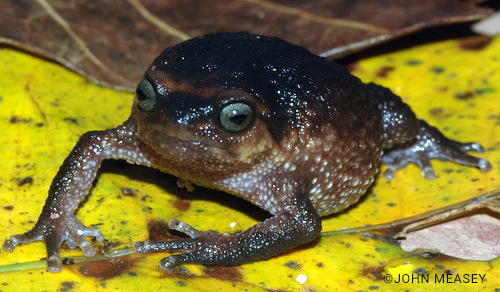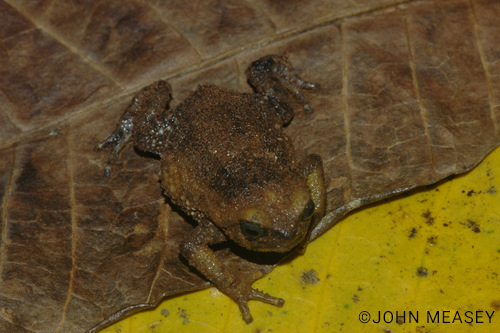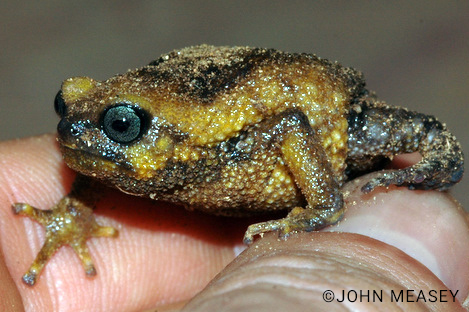About
The Taita warty frog is endemic to Kenya, where it is found only in the severely fragmented montane forests in Taita Hills.
This is a very solitary species and movement is limited, justifying its survival in tiny forest patches. This species is part of the Breviciptidae family, which have a highly characteristic appearance of a bulbous body and tiny head. This family started to diverge and evolve separately from all other modern amphibians about 65 million years ago, at a time where the dinosaur became abruptly extinct, making this species as different from all other amphibians as whales are to giraffes! The genus Callulina diverged 40 million years ago within the Brevicipitids and this intra-family split occurred 5 million years before the origin of monkeys. The population is considered to be severely fragmented, with over 50% of the population scattered between isolated forest patches, with little to no dispersal between patches. These forest patches are degrading due to increasing local human population utilizing forest products i.e. cutting sticks and collection of deadwood. Most of the main forest patches where this species is found are protected, but subject to fuel wood extraction by local smallholders. The Taita hills have been designated as Key Biodiversity Area in which this species is flagship species. Many of the plantations around the area have been earmarked for conversion back to indigenous forest.
- Order: Anura
- Family: Brevicipitidae
- Population: Rare
- Trend: decreasing
- Size: 35-55mm
- Weight: Unspecified
EDGE Score
Distribution
This species is restricted to the Dawida and Mbololo forest blocks in the Taita hills, Kenya. It occurs from 1,397 -2,200 metres above sea level.
Habitat and Ecology
This species can be found in remnant forest patches. They bury themselves in deep, wet forest leaf litter or decomposing logs during the day. They may also be found low down on tree branches. This species reproduces by direct development whereby offspring emerge from the egg as miniature versions of the adults and bypass a free living larval stage. The female will guard a clutch of 30-40 terrestrial eggs until they hatch into froglets.



